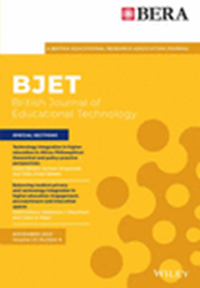Examining cognitive processes of spatial thinking in university students: Insights from a web-based geographic information systems study
Abstract
Spatial thinking is essential for nurturing spatially literate graduates in tertiary education. However, there is limited research on individual differences in cognitive processes and their impact on spatial problem solving in disciplinary contexts. This study aimed to investigate cognitive processes involved in spatial thinking in geography majors using a web-based geographic information systems (GIS) mapping tool. The results revealed three clusters characterised by distinctive cognitive processes: spatial analytic, spatial diagrammatic and alternative. Each cluster adopted unique spatial strategies to solve problems with web-based GIS. Notably, spatial analytic learners demonstrated the most optimal profile, resulting in high spatial task performance. These findings have implications for maximising students' learning potential in spatial thinking in the tertiary classroom, optimising performance outcomes in spatial problem solving and building intelligent tutoring systems for adaptive learning.
Practitioner notes
What is already known about this topic
- There are individual differences in spatial reasoning.
- The processes of spatial thinking may have an impact on learners' spatial performance outcomes.
What this paper adds
- Three clusters characterised by distinctive processes of spatial thinking were identified: spatial analytic, spatial diagrammatic and alternative.
- Each cluster adopted unique spatial strategies to solve problems with web-based GIS.
- Spatial analytic learners demonstrated the optimal profile, resulting in high-level spatial performance, whereas alternative learners exhibited the maladaptive profile, which was associated with low task outcomes.
Implications for practice and/or policy
- Web-based GIS mapping tools make it possible to track the processes of spatial thinking that have remained largely unexplored.
- Cluster analysis and lag sequential analysis reveal differences in spatial reasoning, aiding educators in maximising the potential for university students to learn spatial thinking and optimising performance outcomes in spatial problem solving.
- Our findings could inform learning technology designers to build adaptive learning applications in which students receive automatic feedback and tailored support while completing spatial tasks at their own pace.




 求助内容:
求助内容: 应助结果提醒方式:
应助结果提醒方式:


